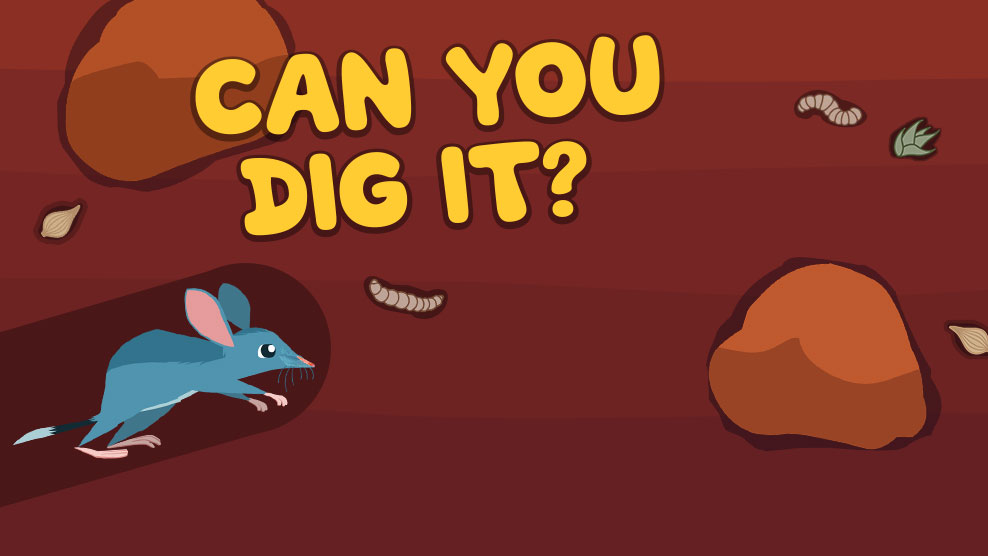Can You Dig It?
What Is This Game?
Kids become bilbies–small Australian marsupials–that scamper across the desert and dig underground to search for food. In this game players earn points for finding food, such as seeds, grasses, insects, and grubs–while looking out for hungry predators (and avoiding running head-first into rocks!).
Conversation Starters
Ask:
- How is being active at night helpful to a bilby?
- Which animals in your neighborhood are active at night? How is this helpful to them?
- How do you use your senses throughout your day? How might you use your senses differently if you were an animal like a bilby, which is active at night and spends part of its time underground?
- What kinds of animals do you think live in the soil near where you live? What kinds of animals eat those animals?
- Bilbies get all the water they need from the foods they eat. How do you get the water you need? Which foods in your diet might also provide you with water?
Explore Some More
My, What Big Ears
Bilbies have a great sense of hearing–they have enormous ears, which help collect and focus sound waves. You can mimic the effect of having larger ears by cupping your hands behind your ears, facing forward, towards the direction of a sound. Stand a few feet from a partner and quietly whisper "Put on your bilby ears." Can your partner hear you? Next, have your partner "put on bilby ears" by cupping his or her hands as described above. Whisper the same phrase again. What difference does your partner notice with bilby ears? You also might go for a walk around the neighborhood or in a park. What sounds can you hear with your bilby ears?
Build a Bilby
During the game, kids learned how bilbies survive in their desert habitat. Now, have them put their knowledge to work! Have kids work in pairs to make models, such as drawings or dioramas, that show how bilbies interact with the plants and animals in their habitat. The models also should show how a bilby's behavior and body parts help it survive in the desert. You might review the following pieces of information from the game to help kids develop their models:
Bilbies have enormous ears that they can rotate. Their large ears help collect sounds, and by moving their ears, bilbies can zero in on sounds–like the sound of a sneaky predator–from any direction.
Like kangaroos and other marsupials, bilby mothers raise their babies in a pouch. But on a bilby, the pouch faces backwards so it does not fill up with dirt when the mother digs a tunnel!
Bilbies are great diggers, digging dozens of underground tunnels in the soft desert sand. They live there, protected from predators, such as owls, dingoes, eagles, and foxes, and from the hot sun.
Bilbies are nocturnal–they come out at night to hunt for food. The air is cooler then, and the cover of darkness provides some protection from daytime predators (but not nocturnal ones!).
Bilbies are omnivores, which means they eat both plants and animals. For bilbies, that includes insects, such as termites and larvae called witchetty grubs, and seeds.
Provide craft materials such as large sheets of construction paper, pipe cleaners, clay or play dough, markers, tape, scissors, and glue for kids to use in their models. You also might collect twigs, leaves, pebbles, or other natural objects for kids to use. Encourage creativity and interaction. You might, for example, have kids build clay models of different animals and show them interacting–an owl chasing a bilby, the bilby digging a tunnel, or a bilby gathering seeds. Wrap up with a sharing session, in which kids present their models to one another.

